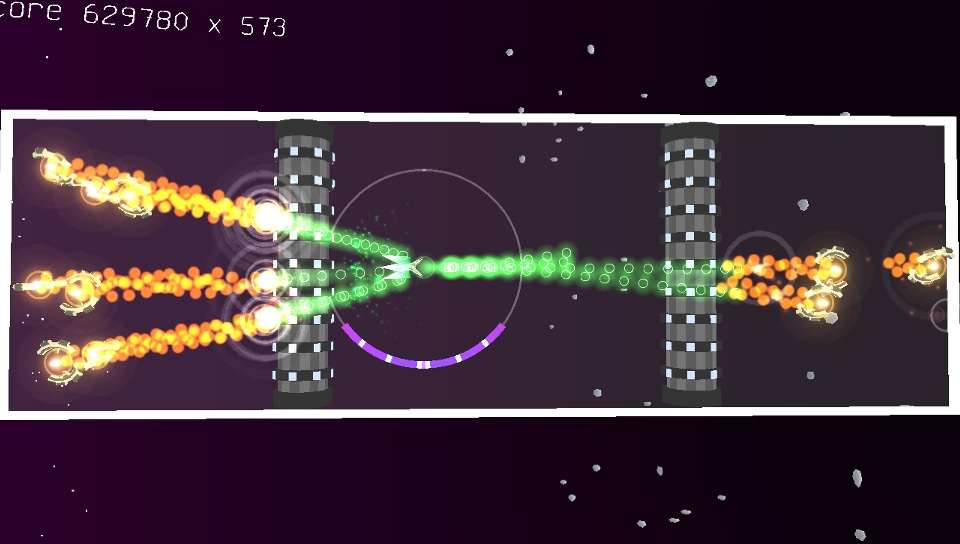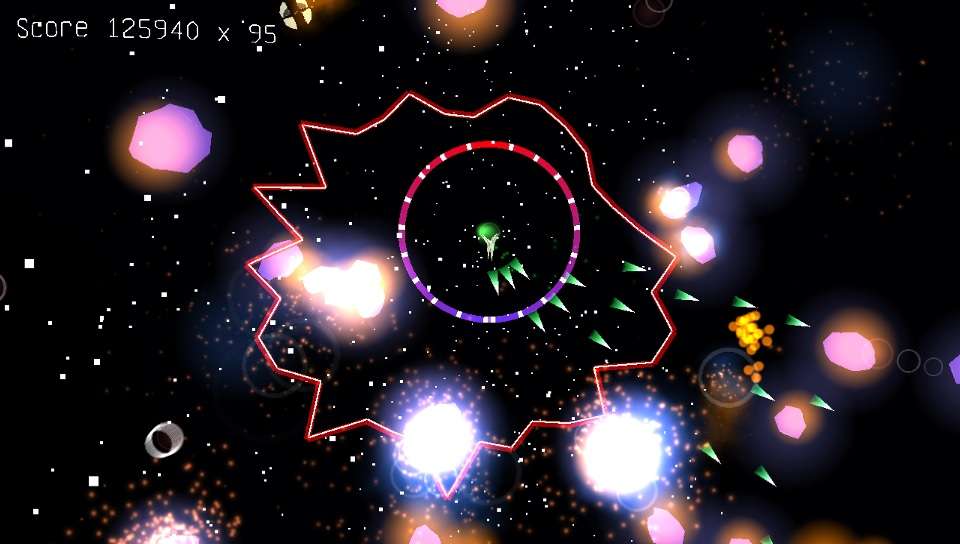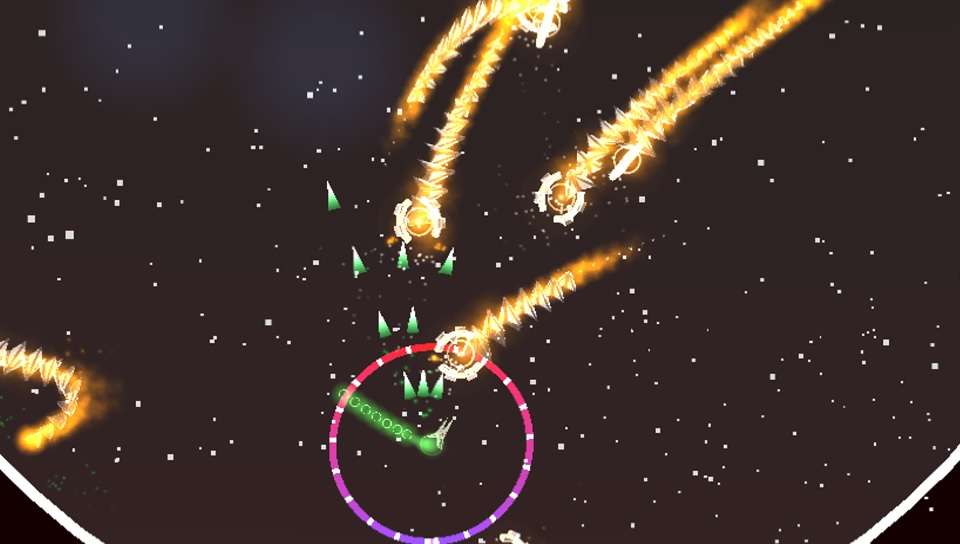
Son of Scoregasm Vita Review
Score attack based arcade games make great sense to have on a handheld platform. Their design is often made for repeated replays through short stints to try better yourself or someone else’s high score. Even though everyone is playing on their Nintendo Switch for the latest in handheld gaming, the Vita still has been receiving a small collection of games, with Son of Scoregasm, a sequel to the PC game Scoregasm – developed by Charlie’s Games, a one man studio – having made its way to the system. It won’t be blowing anyone’s socks off as some sort of swansong for the Vita, but it’s still a well made twin-stick shooter with some cool elements.
For comedy value, the developer has seen it fit to make some note about a story to do with aliens stealing biscuits and the King isn’t that happy about it. That means we need to blast random shapes and get those sweet delicacies back. There is no reason for it to be there, since it’s just a snippet when you first boot up the game and some amusing end goal celebrations, but it’s good to see the developer has a sense of humour about it all, and they have the right to enjoy some dumbness, since what really matters, the mechanics, are what makes playing Son of Scoregasm a joy.
Having a glance over at Son of Scoregasm, it is easy to see the Geometry Wars vibe that its visuals have going for it. It might not present as much flair and special effects splendour as Geometry Wars, but on the handheld it looks fine and never breaks from its minimalist presentation. There is nothing wrong with this approach, because adding all the niceties can sometimes backfire, pulling too much attention away from what the player is supposed to be focused on. The visuals work here, because the action can get hectic, and with only one life per go, it is vital that you are able to track everything on screen, so that your death was down to you and your ability, not the game causing issues to play well.
Controls are as straightforward as can be, with the left stick moving the craft and right stick shooting in the direction the stick is pointed towards, the only other input is the shoulder button, which activates a pulse bomb that clears enemies within the small circle vicinity highlighted around the craft – this also shows how much pulse energy is available, with recharge coming by killing enemies. The pulse bomb is also critical to the game’s scoring system, as this is what causes multipliers to drop in form of little green blobs that add one to the multiplier. You could technically shoot all the enemies and finish a stage, but due to the multiplier beginning at zero, you would get no points.
The area of effect for the bomb isn’t that large (just check the screenshots), so there is an element of risk when going for a big enemy cluster to convert into all those rewarding multipliers. It manages to balance this well, thanks to how fast enemies come and die, as this keeps quickly recharging the bomb, giving players many times to earn multipliers that it fits into a nice rhythm – dodge, shoot and blow up groups of enemies. This fundamental scoring system keeps players on their toes, while having to figure out what is the best pattern to tackle a stage to get a middle ground between shooting and going for those multipliers to overtake high scores or hit the medal target score that each level has. The pulse bomb can also be a life saver, using it to stop being overwhelmed by enemies or their bullets.
Stages are set across a map that branches out from a single starting point into multiple paths. There are currently 28 stages in the game, but due to the design, you will need to take different routes throughout playthroughs to see them all, the bosses and their ending biscuit reward. It’s a design very similar to Star Fox or Outrun, where depending which of the two exits (red or green) is selected after successfully complete a stage will determine which stage comes next on the map. Once a map is discovered, players are free to replay that stage without having to return to the beginning.
Each stage has its own play zone barriers, designed in various shapes. The beginner stage is just a typical circle with enemies inside. Things soon get inventive, such as a stage set within a rectangle with two pillars near the centre that require shooting to push them towards the enemy, as the enemy is doing the same to crush you. If you let the enemy keep spawning, they begin to push the pillars with more force than yourself. Another contains a laser field that changes shape after each wave, adding a smaller zone of play all while still having to fend of armies of enemies. Levels are short, being able to complete them in a minute or two, which reminds me very much of the sequence mode from Geometry Wars 2.
Son of Scoregasm has the mechanics in place for some addictive high score attack gameplay. It’s such a simple twist on the twin-stick shooter formula, but having multipliers tied to the pulse bomb gives itself some originality, but more so, an addictive and tense scoring mechanic that benefits risk/reward and skill for anyone good enough to make it through all the levels. I do wish it had more levels, because the level design gets inventive in the later stages, but even with 28 levels, the difficulty is high that people will spend more time on the game than the length of the levels combined. When you are done, there are still the score medals and leaderboards to take on. Don’t let its visual simplicity mislead you, while this game is simple to pick up, it turns into a challenging game, fast, but also an entertaining one, which pretty much sums it up. Son of Scoregasm should supply a few days of fun for anyone looking for something to play on the Vita in quick bursts while on the go.



